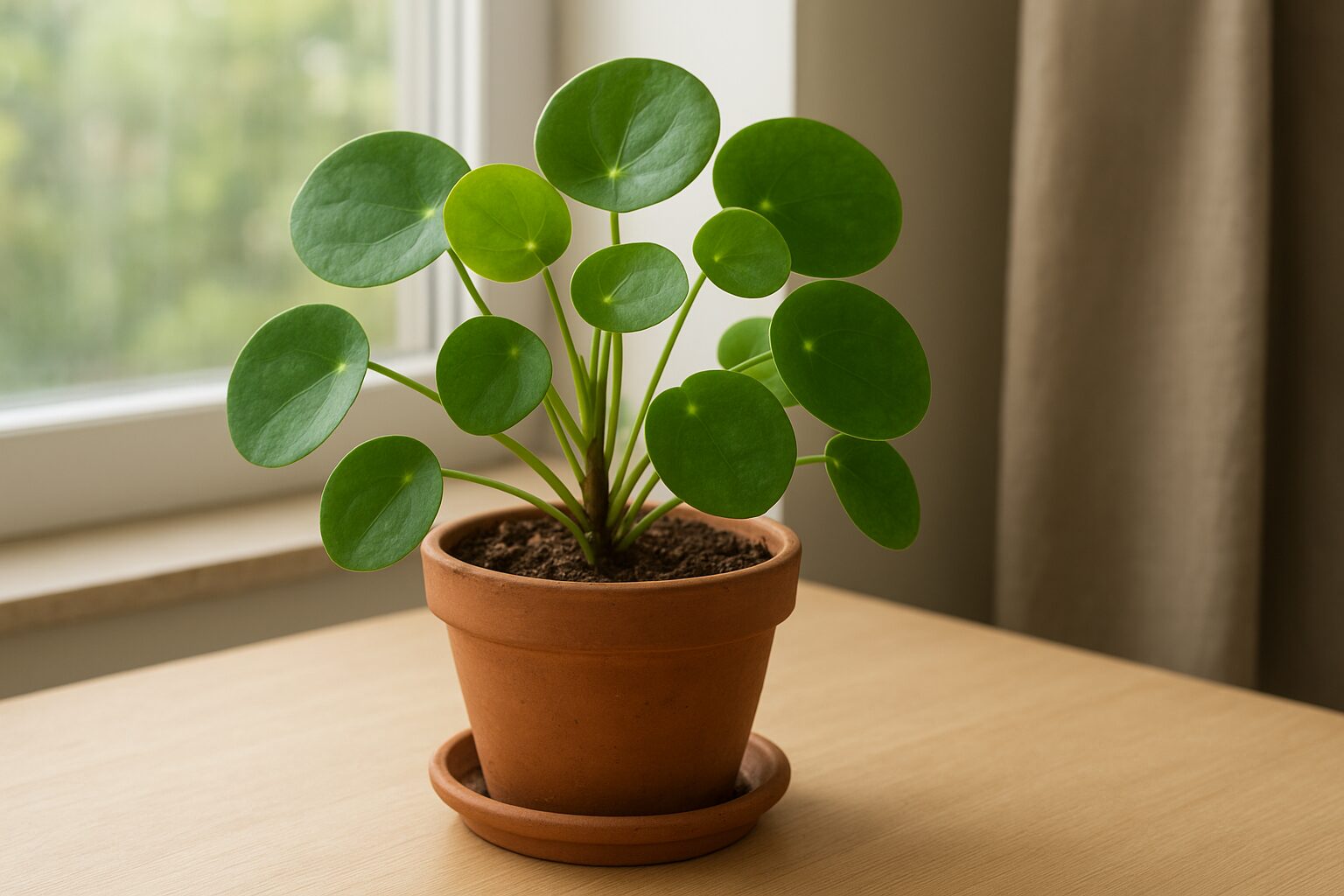The Chinese Money Plant (Pilea peperomioides) is one of the most beloved houseplants among indoor gardening enthusiasts. With its round, coin-shaped leaves and upright growth, it has captured the hearts of plant lovers around the world.
Not only is it decorative, but it’s also considered a symbol of prosperity and good luck, making it a popular addition to homes and offices. Many people are drawn to this plant because it’s relatively low-maintenance, easy to propagate, and adds a cheerful, green touch to any space.
Owning a Chinese Money Plant can boost indoor air quality, enhance your living space aesthetically, and even attract positive energy, according to Feng Shui principles.
Understanding the Chinese Money Plant
Origin and History
Native to southern China, the Chinese Money Plant has been cultivated for generations and became widely popular in Scandinavia during the 1940s. Its nickname, “friendship plant,” comes from the tradition of giving it as a gift to strengthen relationships.
Characteristics and Appearance
- Leaves: Round, flat, coin-shaped leaves on long, slender stems
- Size: Typically grows 12–15 inches tall indoors, though can spread wider
- Growth pattern: Upright and bushy, often producing small offsets or “pups” around the base
Symbolism and Cultural Significance
The plant is often associated with wealth, good fortune, and prosperity. Its Chinese name, Yuanbao, refers to a traditional gold ingot, symbolizing money. Displaying it in the home or office is believed to bring luck in finances and happiness.
Choosing the Right Environment
Creating the perfect environment is key to keeping your Chinese Money Plant healthy and thriving.
Ideal Lighting Conditions
- Prefers bright, indirect light
- Avoid direct sunlight, which can scorch leaves
- Can tolerate low light but will grow more slowly
Temperature and Humidity
- Thrives in 18–24°C (65–75°F)
- Avoid cold drafts and sudden temperature changes
- Average indoor humidity is sufficient, but misting occasionally helps
Indoor vs. Outdoor Placement
- Best grown indoors, as it prefers stable conditions
- Can be placed outdoors in shaded areas during warm months
- Avoid placing near heating vents or air conditioners
Planting Your Chinese Money Plant
Selecting the Right Pot and Soil
- Use a well-draining pot with drainage holes
- Ideal soil: a mix of potting soil, perlite, and sand for aeration
How to Pot the Plant Correctly
- Place a small layer of gravel or pebbles at the bottom for drainage
- Add soil mix and gently place the plant
- Fill around the roots and press lightly to secure
Fertilizer Recommendations
- Feed with a balanced liquid fertilizer once a month during the growing season (spring and summer)
- Reduce fertilization in fall and winter
Watering and Maintenance
How Often to Water
- Water when the top 1–2 inches of soil feel dry
- Typically once a week, but frequency varies by season and climate
Signs of Overwatering and Underwatering
- Overwatering: Yellowing leaves, soggy soil
- Underwatering: Wilting, drooping leaves
Pruning Tips
- Remove yellow or damaged leaves regularly
- Trim stems to encourage bushy growth
Cleaning Leaves
- Dust leaves gently with a soft cloth or spray water to keep them healthy and shiny
Propagation Methods
Chinese Money Plants are easy to propagate, making them perfect for beginners.
Propagating from Offsets/Pups
- Remove small pups from the base
- Plant them in separate pots with fresh soil
Step-by-Step Water Propagation
- Cut a healthy pup or leaf stem
- Place in water until roots develop (2–4 weeks)
- Transfer to soil once roots are strong
Soil Propagation
- Plant offsets directly in moist soil
- Keep the soil consistently damp until roots establish
Tips for Success:
- Use clean tools to prevent infection
- Ensure the plant receives bright, indirect light during propagation
Troubleshooting Common Problems
Yellowing or Dropping Leaves
- Often caused by overwatering or poor light
- Adjust watering schedule and light exposure
Root Rot Prevention
- Ensure well-draining soil
- Remove affected roots if rot occurs
Pest Issues
- Common pests: mealybugs, aphids, spider mites
- Treat with insecticidal soap or neem oil
Reviving a Struggling Plant
- Trim damaged leaves and stems
- Repot in fresh soil if necessary
- Adjust light and watering routines
Tips for Keeping It Thriving
Seasonal Care Adjustments
- Reduce watering in winter
- Rotate the plant periodically for even growth
Repotting Schedule
- Repot every 1–2 years to avoid root crowding
- Choose a slightly larger pot each time
Encouraging Bushy Growth
- Regular pruning encourages multiple stems and more pups
- Fertilize during growing season for optimal leaf development
Combining with Other Plants
- Works well with succulents or tropical houseplants
- Use decorative pots to enhance visual appeal
Fun Facts and Decorative Ideas
- Creative displays: Hang in macrame plant hangers or place on shelves
- Feng Shui: Place near the entrance or wealth corner for positive energy
- Varieties: Explore different cultivars with slightly varied leaf shapes or sizes
FAQ Section
How often should I water my Chinese Money Plant?
Water once a week or when the top 1–2 inches of soil are dry. Adjust based on climate and season.
Can it survive in low-light conditions?
Yes, but growth will be slower and leaves may become smaller. Bright, indirect light is ideal.
How long does it take to grow new pups?
Typically 3–6 months under optimal conditions.
What is the best soil for Chinese Money Plant?
A mix of potting soil, perlite, and sand ensures proper drainage and aeration.
Conclusion
The Chinese Money Plant is not only beautiful but also easy to grow, propagate, and maintain. By providing bright, indirect light, proper watering, and regular care, you can enjoy a thriving plant that adds greenery, charm, and even a touch of luck to your home.
Remember, growing this plant is as much about patience and observation as it is about watering and light. Enjoy the process and watch your plant flourish over time.
Disclaimer
This article provides general advice for indoor plant care. It is not a substitute for professional horticultural guidance. Individual plant needs may vary depending on environment and climate.



